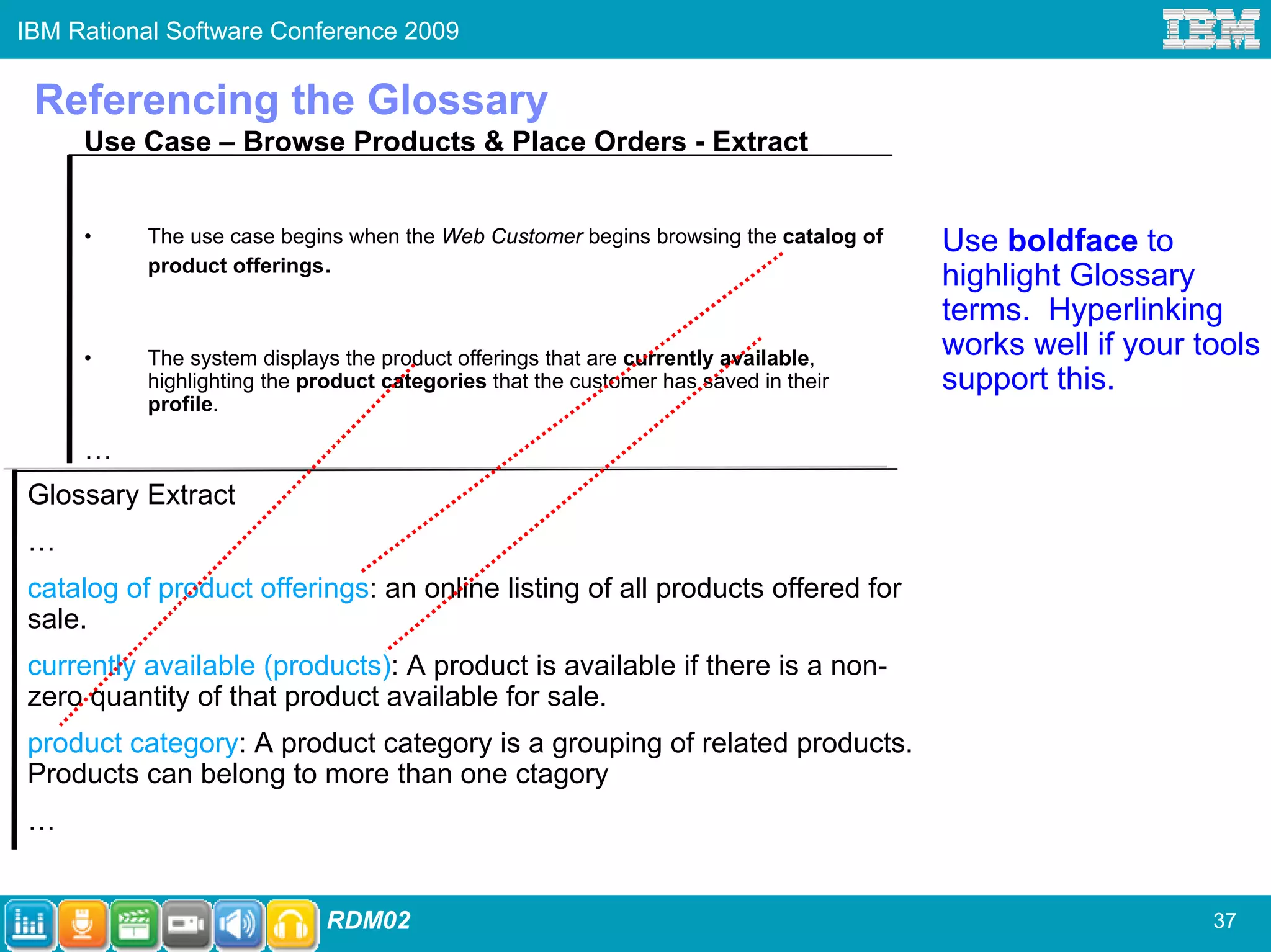This document summarizes a presentation on adopting an agile approach to requirements for complex systems and distributed teams. It discusses using a product backlog, user stories, use cases and scenarios to understand desired outcomes. It also covers exploring solutions through visualization, prototyping, and reviews. The presentation emphasizes using the right level of detail for requirements and a blend of techniques including backlogs, models, prototypes and specifications.















































